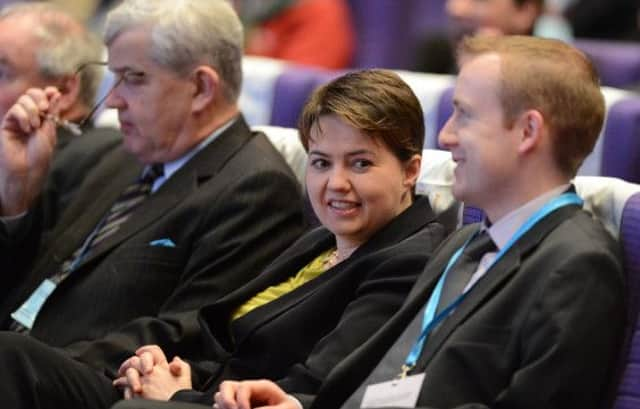Leaders: Tax changes require sensible scrutiny


Amid the noise and clamour of referendum claim and counter-claim, it is refreshing that the issue of how the Scottish Parliament would use its enhanced tax powers is being aired. For the first 15 years of devolution, Holyrood opted not to vary income tax by up to 3p in the pound. This was not only because of a fear of voter retribution – raising taxes is rarely a vote winner – but also because the cost of getting the tax machinery in place would run to tens of millions of pounds, thus largely negating the benefits. As from April 2016, when the new powers come into effect, any change to the income tax system will not attract this penalty.
A pledge by Scottish Labour to raise more income tax from those better off would play well, not just with its core voters. This may help to galvanise the party and to restore to it a sense of purpose and mission. But Ms Lamont needs to tread carefully. There are large numbers of people in Scotland who pay no income tax at all. And a very large proportion of income tax revenue already comes from higher rate taxpayers. According to the Institute of Chartered Accountants in Scotland, some 10 per cent of Scottish taxpayers are reckoned to pay higher rate tax, and revenue from here accounted for almost half (49 per cent) of all income tax revenue. Tempting though it may be for Labour to ratchet up the tax take on Scotland’s high earners, it may work to deter many companies from locating here and could prompt an exodus of talent.
Advertisement
Hide AdAdvertisement
Hide AdThe problems facing Ruth Davidson are no less daunting. It may well be, as she argues, that successive governments “have taken too much in tax”. But Scottish voters are acutely sensitive to any preferential treatment being given to those they consider to be “well off”. At Westminster, the Conservative leader David Cameron is offering no comfort whatever to those who have been sucked into the higher rate tax band by fiscal drag: the priority in the budget this week, we are told, is to help those at the lower end of the income scale. There would also have to be considerably further progress on deficit and debt reduction before a Conservative administration could credibly argue that tax cuts are affordable while it is still bearing down on central and local government spending.
Nevertheless, it is important that these issues are aired and understood. What is imperative is that any proposals, whether to raise or reduce income tax in Scotland, are fully researched for their consequences.
Thorough research into the tax plans of the respective parties to ensure that the costs are fully grasped would be the mark of a mature and intelligent Scottish Parliament.
Livingstone centre needs re-birth
DAVID Livingstone is one of the best known Scots in the world. He was a hugely significant figure in Africa. He bravely went into areas hitherto unexplored and added greatly to our understanding of the continent and its people.
So it is troubling to report that his birthplace in Lanarkshire is facing an uncertain future unless it undergoes a multi-million pound refurbishment. The National Trust for Scotland is warning that further financial support may not be forthcoming unless it secures help in the form of Heritage Lottery funding. It is said that at least £12 million will be needed to bring the visitor centre dedicated to his famous explorations in Africa up to modern-day standards.
The centre, which dates back to 1929, is running at a loss and the charitable trust which owns it does not have the means to pay for a major overhaul. It should be able to mount a strong case for Heritage Lottery funding, but central to any application should be detailed proposals to promote the centre and increase visitor numbers. Too many projects fail because of a lack of follow-through on marketing and promotion.
These proposals would be all the more compelling if the numerous public agencies involved in promoting Scotland’s heritage can lend support. At present the centre in Blantyre attracts just 25,000 visitors a year. It needs to see a multiple of this number for refurbishment to be a success. If it is unsuccessful, the running of the centre may have to be scaled back or even wound up completely.
Backed by detailed marketing plans to raise awareness of the centre, this is an application for £4.5m of Heritage Lottery Fund assistance that deserves understanding and support.